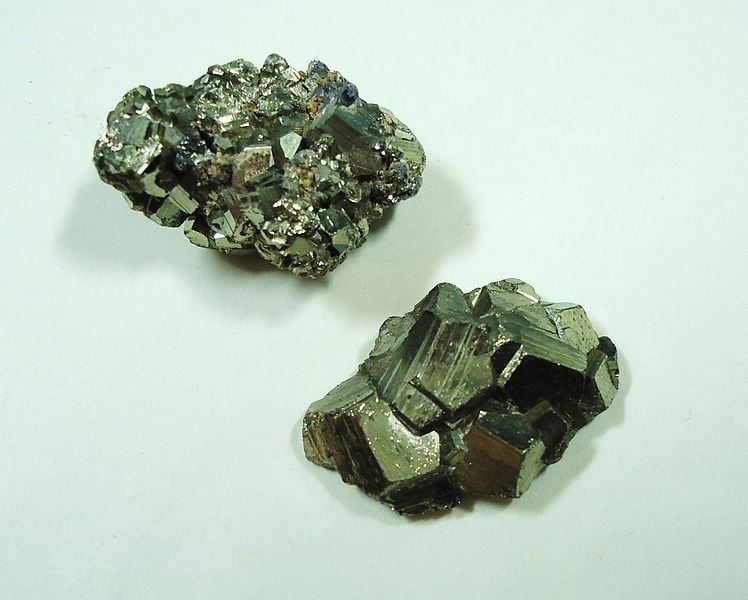Pyrite Value, Price, and Jewelry Information
Pyrite is more commonly known as fool’s gold and is familiar to nearly every mineral collector. It has been used for centuries both in jewelry and as an ore of iron. “Marcasite” stones in jewelry are frequently pyrite, since the latter is more stable. The material is very brittle and heat sensitive and requires some care in cutting. Cabochons are sometimes cut, but they have no special appeal.
Pyrite is more commonly known as fool’s gold and is familiar to nearly every mineral collector. It has been used for centuries both in jewelry and as an ore of iron. “Marcasite” stones in jewelry are frequently pyrite, since the latter is more stable. The material is very brittle and heat sensitive and requires some care in cutting. Cabochons are sometimes cut, but they have no special appeal.
Start an IGS Membership today
for full access to our price guide (updated monthly).Pyrite Value
Dimorph of Marcasite.
Streak: Greenish black.
Other Tests: Nonmagnetic; insoluble in HCl.
Occurrence: The most abundant of all sulfide minerals; occurs in nearly all rock types and most geological environments. Localities too numerous to list in detail. Fine crystals are known from the following localities:
Leadville, Colorado; French Creek. Pennsylvania;
Bingham, Utah.
Elba, Italy; Ambassaguas, Spain; England; Austria;
Germany; Switzerland; Sweden; Peru; Bolivia.
Comments: Pyrite is more commonly known as fool's gold and is familiar to nearly every mineral collector. It has been used for centuries both in jewelry and as an ore of iron. "Marcasite" stones in jewelry are frequently pyrite, since the latter is more stable. The material is very brittle and heat sensitive and requires some care in cutting. Cabochons are sometimes cut, but they have no special appeal.
Name: From the Greek word for fire, because pyrite emits sparks when struck like a flint.
Joel E. Arem, Ph.D., FGA
Dr. Joel E. Arem has more than 60 years of experience in the world of gems and minerals. After obtaining his Ph.D. in Mineralogy from Harvard University, he has published numerous books that are still among the most widely used references and guidebooks on crystals, gems and minerals in the world.
Co-founder and President of numerous organizations, Dr. Arem has enjoyed a lifelong career in mineralogy and gemology. He has been a Smithsonian scientist and Curator, a consultant to many well-known companies and institutions, and a prolific author and speaker. Although his main activities have been as a gem cutter and dealer, his focus has always been education. joelarem.com
Related Articles
Black Diamond Value, Price, and Jewelry Information
Chameleon Diamond Value, Price, and Jewelry Information
Gray Diamond Value, Price, and Jewelry Information
Green Diamond Value, Price, and Jewelry Information
Latest Articles
Hambergite Value, Price, and Jewelry Information
Pearl Simulants: How to Spot Faux Pearls
Opal Buying Guide
Amethyst Sources Around the World: The Geological Story Behind These Purple Gemstones
Never Stop Learning
When you join the IGS community, you get trusted diamond & gemstone information when you need it.
Get Gemology Insights
Get started with the International Gem Society’s free guide to gemstone identification. Join our weekly newsletter & get a free copy of the Gem ID Checklist!
